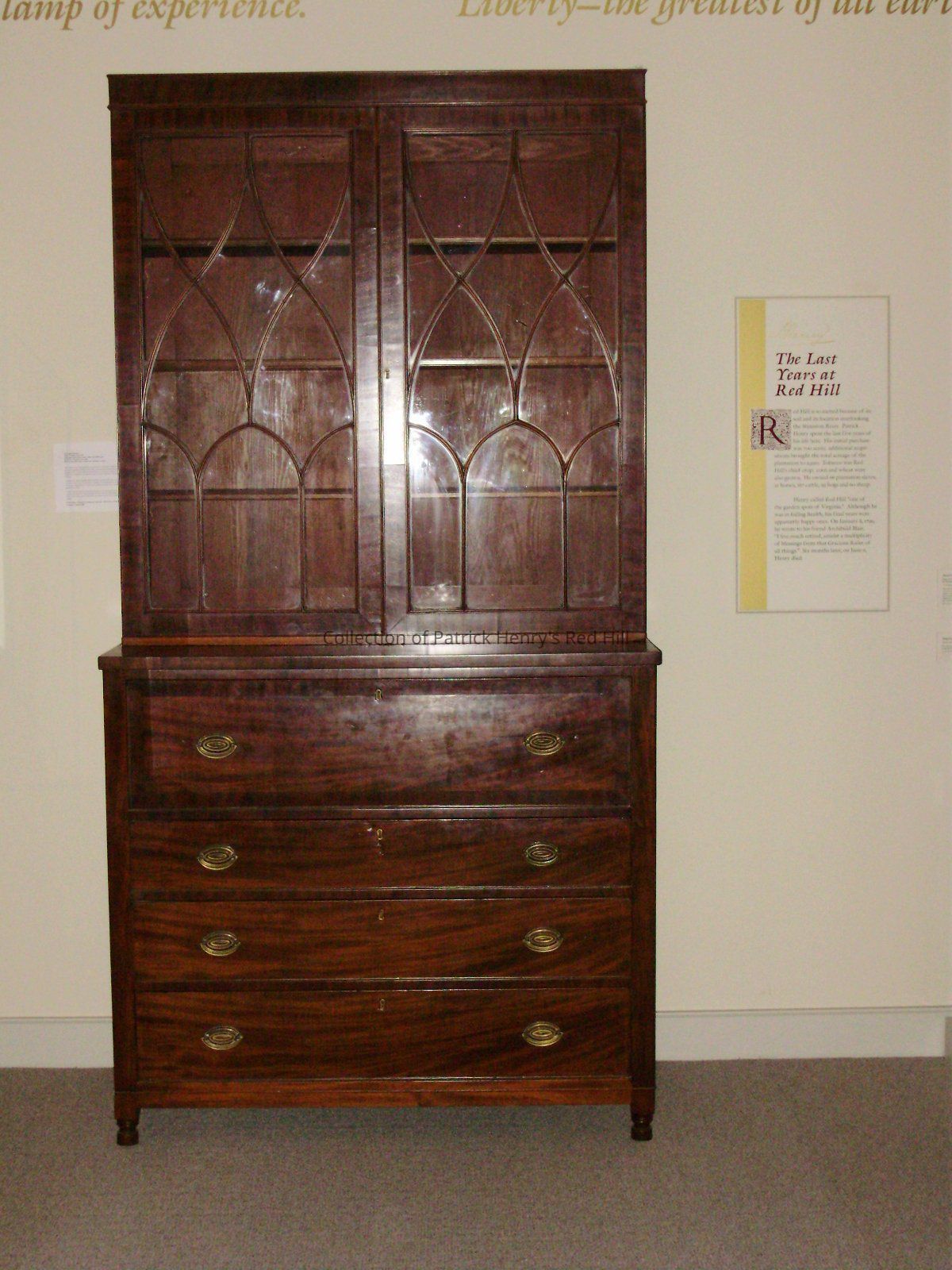Notes
This secretary and bookcase once belonged to Alexander Spotswood Henry (1788–1854), son of Patrick Henry. Alexander Spotswood Henry married Paulina Jordan Cabell (1794–1833), the daughter of Dr. George Cabell (1766–1823), who attended Patrick Henry on his deathbed. The secretary portion of the piece dates to circa 1825, while the upper bookcase component may be as old as 1800 or may be closer to the date of the desk.
Alexander Spotswood Henry was supposed to have been a great reader, so it makes sense he would have a piece of furniture like this. After the death of Alexander Henry in 1854, the desk passed from his home in Shady Grove to his daughter Sarah Winston Henry Carrington (1821–1906), who married her cousin Dr. George Cabell Carrington (1819–1880). Their son Richard Bruce Carrington (1858–1927) inherited the desk. After the passing of Richard Bruce Carrington, his widow, Ida Harrison Carrington (1863–1946), kept the desk as a prized possession in their Richmond home. An interview with Mrs. Carrington in the "Richmond Times-Dispatch" in 1935 mentions the desk as having passed down to Alexander Spotswood Henry from his father, Patrick Henry. Modern appraisals indicate this could not be the case. Workmanship proves that the desk and the bookcase section were made after Henry's death in 1799.
Richard Bruce Carrington and Ida Carrington had no children. The desk eventually came to their grandnephew Flavius Archer Waddell Jr. (1901–1973). Flavius Waddell Jr.'s mother, Mildred Coles Carrington (1871–1942), was a niece of Richard and Ida Carrington but did not outlive her Aunt Ida Carrington, dying in 1942.
Flavius Waddell Jr. had only one adopted daughter, Joan Archer Waddell Martin (1933–2008). She married Frank E. Martin. Her father, Flavius Waddell Jr., willed the desk to one of Mrs. Martin's daughters. Presumably, at some point, Joan Martin took full ownership. Mrs. Martin donated the secretary to the Patrick Henry Memorial Foundation in April 2002.
